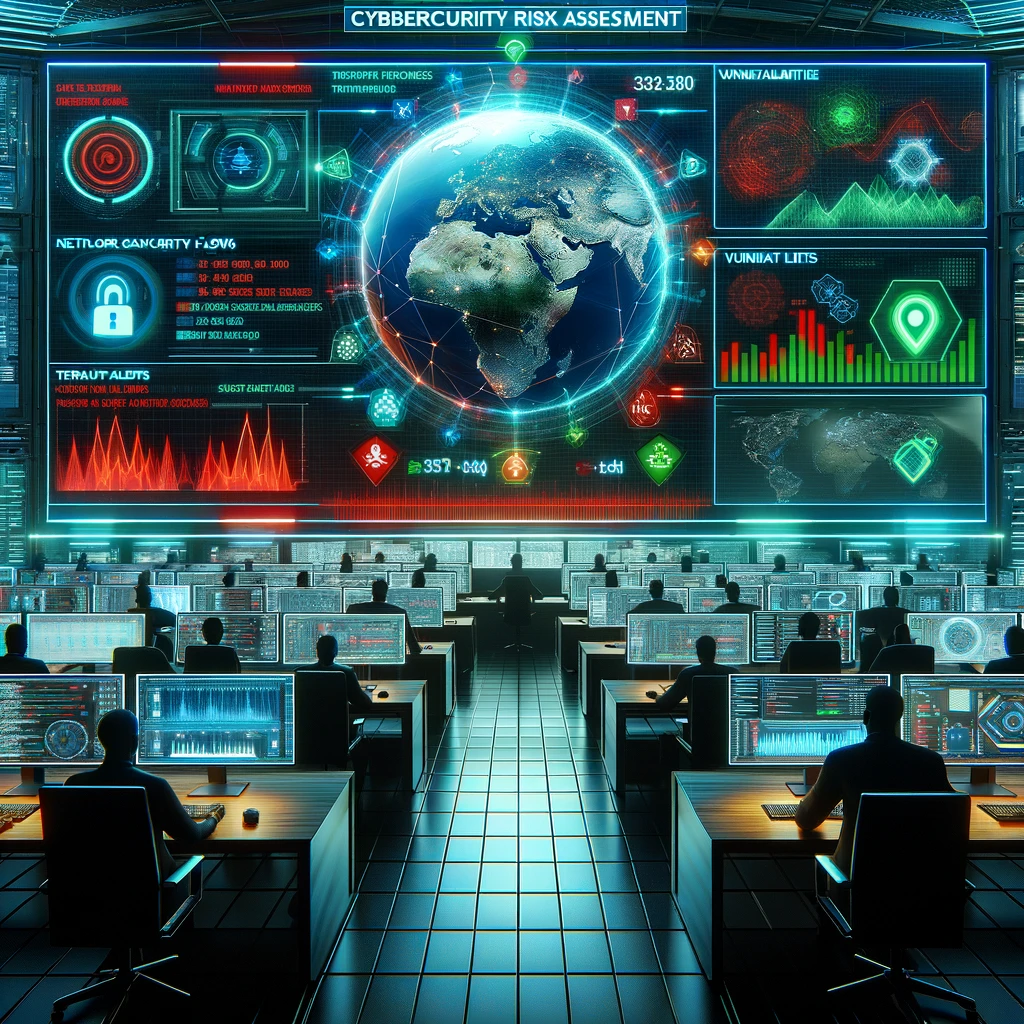Understanding the landscape of cybersecurity threats requires a nuanced appreciation of the diverse tactics and strategies employed by malicious actors. While discussions often center around the technical intricacies of hacking techniques or the vulnerabilities inherent in software systems, it’s equally imperative to acknowledge the distinct scales at which attacks can manifest. By doing so, cybersecurity professionals can develop comprehensive defense strategies that address the multifaceted nature of threats.
Human-Scale Attacks
At one end of the spectrum, human-scale attacks leverage the fallibility of human cognition and behavior to exploit vulnerabilities in security protocols. These attacks often rely on social engineering tactics, psychological manipulation, and the exploitation of trust to bypass traditional security measures. Unlike machine-scale attacks, which operate autonomously and target systems en masse, human-scale attacks require a level of creativity, adaptability, and interpersonal skill to deceive and manipulate individuals effectively. Consequently, combating human-scale attacks necessitates a multifaceted approach that encompasses not only technological safeguards but also user education, awareness training, and behavioral analysis.
Examples of human-scale attacks include:
- Phishing: Phishing attacks involve sending deceptive emails or messages impersonating legitimate entities to trick recipients into clicking malicious links, downloading malware, or disclosing confidential information such as passwords or financial details.
- Social Engineering: Social engineering attacks exploit human psychology to manipulate individuals into performing actions or divulging sensitive information. This can include pretexting, where attackers create a fabricated scenario to gain trust, or baiting, where enticing offers or incentives are used to lure victims into compromising situations.
- Impersonation: Attackers may impersonate trusted individuals or entities, such as IT administrators, colleagues, or service providers, to gain unauthorized access to systems, networks, or sensitive data.
Machine-Scale Attacks
On the other hand, machine-scale attacks harness the power of automation, algorithms, and botnets to target systems, networks, or devices on a large scale. These attacks can overwhelm defenses with sheer volume or exploit vulnerabilities at a speed and scale that would be unfeasible for human attackers. Machine-scale attacks pose significant challenges to cybersecurity professionals, as they often require advanced technical defenses, real-time threat intelligence, and proactive mitigation strategies to detect and neutralize. Moreover, the proliferation of interconnected devices and the rise of the Internet of Things (IoT) have expanded the attack surface, providing fertile ground for machine-scale attacks to proliferate and evolve.
Examples of machine-scale attacks include:
- Distributed Denial of Service (DDoS): DDoS attacks flood targeted systems or networks with an overwhelming volume of traffic, rendering them inaccessible to legitimate users. These attacks often employ botnets—networks of compromised devices—to amplify the volume of traffic and maximize the impact.
- Brute Force Attacks: Brute force attacks systematically try a large number of combinations or passwords to gain unauthorized access to systems, accounts, or encrypted data. While human-scale brute force attacks are feasible, machine-scale attacks can leverage automated tools or scripts to rapidly iterate through password combinations.
- Automated Malware Exploitation: Malware such as worms, viruses, or ransomware can propagate autonomously across networks, exploiting vulnerabilities in software systems or exploiting misconfigurations without human intervention.
By delineating between human-scale and machine-scale attacks, organizations can tailor their cybersecurity posture to address the specific challenges posed by each type of threat. While human-scale attacks demand a focus on human factors, such as user behavior and awareness, machine-scale attacks require robust technical controls, automated detection mechanisms, and agile response capabilities. Furthermore, recognizing the interplay between these two dimensions of cyber threats enables organizations to develop synergistic defense strategies that leverage both human intelligence and technological innovation to safeguard against evolving threats.
Machine-Scale Attacks in the Age of AI
The convergence of AI and cyber threats introduces new dimensions of sophistication, automation, and scalability to malicious activities, amplifying the potential impact on individuals, organizations, and society as a whole.
- Automated Weaponization: AI-powered tools and algorithms enable threat actors to automate various stages of the cyberattack lifecycle, from reconnaissance and infiltration to data exfiltration and exploitation. Machine learning algorithms can analyze vast datasets to identify exploitable vulnerabilities, craft tailored phishing messages, or optimize malware payloads for maximum effectiveness. This automation accelerates the pace and scale of attacks, allowing adversaries to target multiple systems or networks simultaneously with minimal human intervention.
- Adversarial AI: Adversarial AI refers to the use of machine learning techniques to develop sophisticated evasion tactics or bypass traditional security measures. Adversaries can leverage AI algorithms to generate stealthy malware variants, evade detection by intrusion detection systems (IDS) or antivirus software, or conduct dynamic reconnaissance to identify weak points in defenses. Moreover, AI-powered attacks can adapt and evolve in response to changing security landscapes, posing challenges for defenders attempting to anticipate and mitigate emerging threats.
- Scale and Scope: Machine-scale attacks, augmented by AI capabilities, can target a broad spectrum of assets, including IoT devices, cloud infrastructure, critical infrastructure systems, and interconnected networks. The proliferation of connected devices and digital ecosystems amplifies the attack surface, providing adversaries with an expansive playground to exploit vulnerabilities and propagate malware. Furthermore, AI-driven attacks can propagate rapidly across networks, leveraging automated propagation techniques or botnets to infect large numbers of devices in a short timeframe.
- Erosion of Trust: The proliferation of AI-driven cyber threats erodes trust in digital systems, undermining confidence in online interactions, e-commerce platforms, and critical infrastructure services. As AI-powered attacks become more sophisticated and pervasive, individuals and organizations may become increasingly wary of engaging with digital technologies, leading to economic disruptions, social unrest, and erosion of public trust in digital governance frameworks.
Addressing the exponential threat of machine-scale attacks fueled by AI requires a multi-faceted approach that combines technological innovation, regulatory frameworks, and collaboration across sectors. Cybersecurity professionals must leverage advanced AI-driven defense mechanisms, such as behavioral analytics, anomaly detection, and automated response capabilities, to proactively detect and mitigate emerging threats. Additionally, policymakers and regulators play a crucial role in establishing robust governance frameworks, promoting information sharing initiatives, and fostering international cooperation to address the global nature of AI-driven cyber threats.
The exponential threat of machine-scale attacks enabled by AI underscores the urgency for collective action to strengthen cybersecurity resilience and mitigate the potential impact on individuals, businesses, and society. By embracing technological innovation, fostering collaboration, and upholding principles of transparency and accountability, we can navigate the evolving landscape of AI-driven cyber threats and safeguard the integrity and security of digital ecosystems.
Key Differences and Implications
Understanding the differences between human-scale and machine-scale attacks is crucial for devising effective cybersecurity strategies. While human-scale attacks often exploit the weakest link in the security chain—human behavior—machine-scale attacks exploit vulnerabilities in technology infrastructure or software systems.
Moreover, human-scale attacks often require a level of social engineering or manipulation that may evade traditional security measures, emphasizing the importance of user education, awareness training, and behavioral analysis. Conversely, machine-scale attacks demand robust technical defenses, such as intrusion detection systems, firewalls, and automated threat detection mechanisms, to mitigate the risks effectively.
In conclusion, the distinction between human-scale and machine-scale attacks underscores the multifaceted nature of cybersecurity threats. By recognizing the unique characteristics and implications of each type of attack, organizations can adopt a holistic approach to cybersecurity that integrates technical controls, user awareness, and proactive defense mechanisms to mitigate risks effectively.

Penetra Cybersecurity is at the forefront of defending the digital frontier, providing cutting-edge solutions to protect businesses and organizations from the ever-evolving threats of the cyber world. Established with a mission to create a safer internet for everyone, Penetra leverages a blend of advanced technology, expert knowledge, and proactive strategies to stay ahead of cybercriminals.
Ready to take the next step towards a more secure future? Schedule a consultation with us today and discover how we can help protect what matters most to you. Don’t wait until it’s too late—with Penetra Cybersecurity, your business isn’t just secure; it’s imPenetrable.




